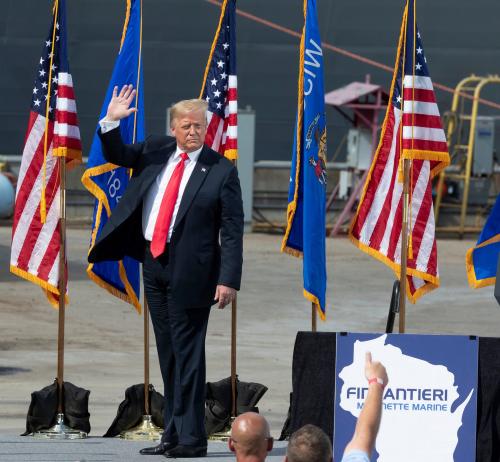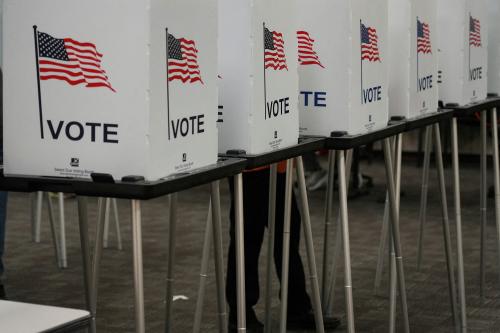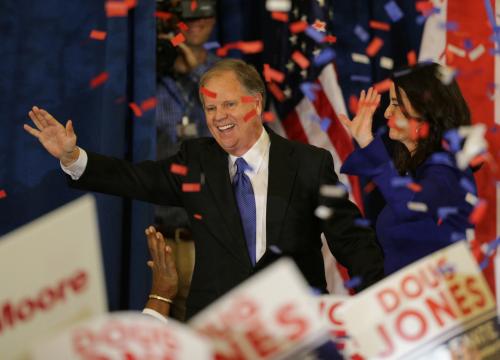We all know that presidential re-election campaigns are referendums on the incumbent, or such was the conventional wisdom that anyone over 40 grew up with. The 2020 election, however, seems to suggest a change that has been in the works since the end of the last century. Re-election bids may have become reruns instead of referendums.
The table below shows the numbers. It shows how many states flipped from one party to the other in each of the past eight elections when an incumbent president was up for a second four years. The chart also shows the change in the number of electoral votes the incumbent received on his second outing compared to his first.
| Year | Number of states that flipped | Change in electoral votes for incumbent party |
| 1956 | 4 | 15 |
| 1972 | 15 | 219 |
| 1980 | 17 | -248 |
| 1984 | 5 | 36 |
| 1992 | 22 | -258 |
| 1996 | 5 | 9 |
| 2004 | 3 | 15 |
| 2012 | 2 | -33 |
| 2020* | 5 | -74 |
|
Note: The number of states that flipped is gross, not net. Thus, comparing 1996 to 1992, three states switched to the Republican column and two switched to the Democratic column, a net of one but a gross of five. * 2020 results are not final. |
||
By both measures, the trend is evident. In 1972, 1980, and 1992, large numbers of states and electoral votes switched parties. All three elections played the classic referendum role, giving incumbents resounding feedback—positive one case, negative in two.
Two other elections, 1956 and 1984, showed less volatility, but both years were unusual. In 1956, the same two candidates squared off as in 1952, and so the similarity of the outcomes seems logical. In 1984, Ronald Reagan’s gains were modest, but his sweep in 1980 was so commanding that four years later he was almost out of room to improve.
Starting in 1996, it’s possible that a new pattern is emerging. Even dramatically changing circumstances over a president’s first term, such as the launching of wars in Iraq and Afghanistan in the early 2000s, show little impact on the president’s reelection bid. (This New York Times chart makes the point graphically.)
What happened? Partisanship hardened boundaries. As the parties have sorted into polarized, mutually antagonistic camps, swing voters have become scarce. Increasingly, partisans look to their party affiliation as the source of their group identity and view the other side as the enemy, a phenomenon that a team of scholars calls political sectarianism. As David French writes in TIME, “Americans are by and large entrenched in their political and cultural tribes, and virtually nothing can budge them out of their partisan voting lanes.”
To put the point differently, circumstances (things like wars, recessions, and pandemics), policy platforms, and even campaigns seem to have less influence on reelection bids than in the past and may not even matter all that much. Voters seem to view the candidates less as bundles of character traits and policy ideas than as standard-bearers for the partisan tribes. Instead of judging the incumbent’s record, voters are cheering for their team and reaffirming their previous choice. If they voted for or against for a president once, they are not likely to switch the second time around.
One fact supporting that interpretation is the stability of both candidates’ ratings in the polls this year, despite an impeachment, a pandemic, a recession, and an unhinged debate performance by President Trump. Also suggestive is that the Republicans did not even bother to draw up a 2020 platform. Instead, they recycled their 2016 platform, a strategy implying that promises and policies would move few voters.
Despite the 2020 election’s sky-high turnout and dramatic result (unseating an incumbent president for the first time since 1992), it seems to have confirmed the pattern. As of this writing, results are not final, but former Vice President Joe Biden looks likely to have flipped five states that Hillary Clinton lost in 2020. Except in Michigan, however, he did so by the hair’s-breadth margins. Because Trump’s 2016 win was very close in key states, those modest swings changed the outcome.
By the standards of post-1992 re-election contests, Biden’s probable haul of five states turning blue—with none going the other direction—was impressive. And it may be as close to a wave as we are likely to see in second-term bids. Those who were looking for a big repudiation of Trump’s chaotic years may find that well-defined rejections of incumbent presidents may be a thing of the past.







Commentary
Are re-elections reruns?
November 16, 2020